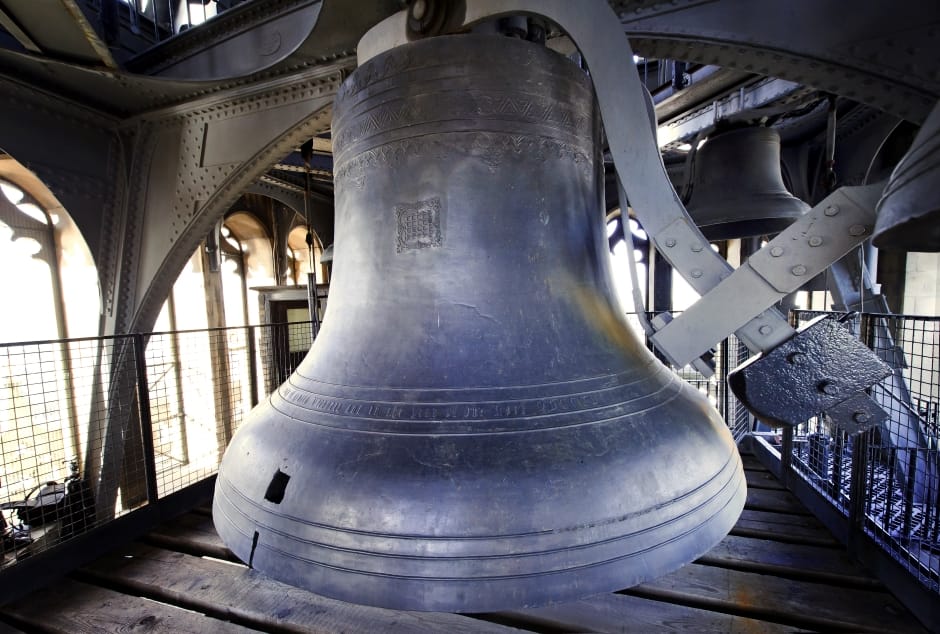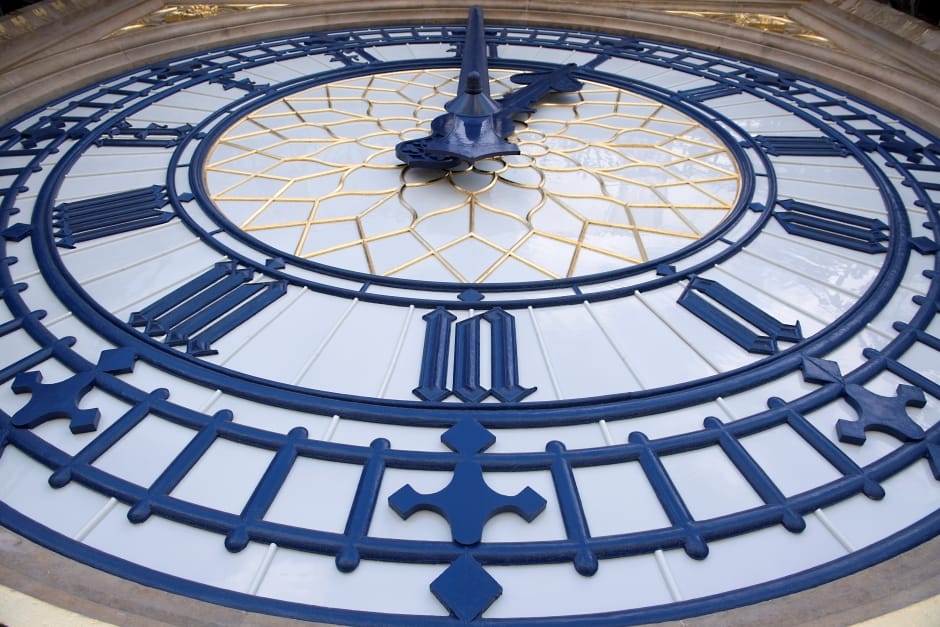
The Great Bell – known to most as Big Ben – has remained in the belfry of Elizabeth Tower whilst the most extensive programme of conservation work is carried out on the Tower itself. The project began in 2017 and is due for completion in 2021.
Big Ben has remained in situ but the Great Clock – the 11 tonne mechanism that kept time and ensured the bell was struck with punctuality – has been taken apart and removed from the site so that clockmakers can service every cog and wheel that makes up the Victorian timepiece.
Since the project began, Big Ben has temporarily stopped its hourly chimes, but an electric motor has been installed to drive the temporary hands of the clock whilst the mechanism is restored, and the bell is struck for Remembrance Sunday and New Year’s Eve whilst work continues.

Adam Watrobski, principal architect, explained to reporters that Elizabeth Tower is 96m tall and that the first 61m is made up of masonry. The remaining 35m is cast iron, which Watrobski said was inspired by Liverpool’s Albert Dock, a structure built in 1846 that was the first fireproof dock warehouse.
“Cast iron [is] a fantastically important material,” he said. “No other roofing material would have lasted as long as this [but] the problem with it is it's extremely heavy and nobody up until now has known what to do with it in terms of maintenance and repair.”
Watrobski added that the roof is made up of 3,433 pieces of cast iron, of which about 20 per cent were recast and renewed. The rest, he said, have been cleaned up, repaired and put back again. In Watrobski’s words, the iron roofing resembles ‘Meccano parts which simply come off and go back on again with bolts holding the plates on and coveralls that go over those’.

Parts of the roof that were removed were sent to Shepley’s works in Sheffield and grit blasted under very controlled conditions before being repaired and sprayed with liquid zinc and then coated in micaceous iron oxide. According to Watrobski, the micaceous iron oxide coating will give the roof parts between 60-80 years of useful life.
“The weak point, if there is a weak point, is the mastic sealant,” said Watrobski. “The Victorians would have used red lead and hemp for caulking. Labour was very cheap in those days and now things have reversed, labour is far more expensive than materials so we’re using fancy mastics that we think will last 25 to 30 years. We may need, in that period of time, to look at renewing some of the mastics but at the end of the day all buildings need maintenance and that’ll be part of it.”
A major milestone in the restoration includes completion of the new-look North Dial, which has been re-glazed, repainted and re-gilded in the original Prussian blue and gilt Victorian colour scheme. The material used on the restoration is made up of translucent 23.5-carat gold, standard heavy-duty gilding, which Watrobski said is extremely weatherproof and ‘much, much better than paint’. He added that the re-glazed dials are made up of 324 pieces of mouth-blown glass produced in Germany by Lamberts.
When the essential work to conserve the Elizabeth Tower is completed, the clock parts will start making the journey back up the Tower to be reassembled, and the mechanism will be reattached to the hands and the bells.
https://www.theengineer.co.uk/june-1858-big-ben-mark-two/










Guest blog: exploring opportunities for hydrogen combustion engines
"We wouldn't need to pillage the environment for the rare metals for batteries, magnets, or catalisers". Batteries don't use rare...